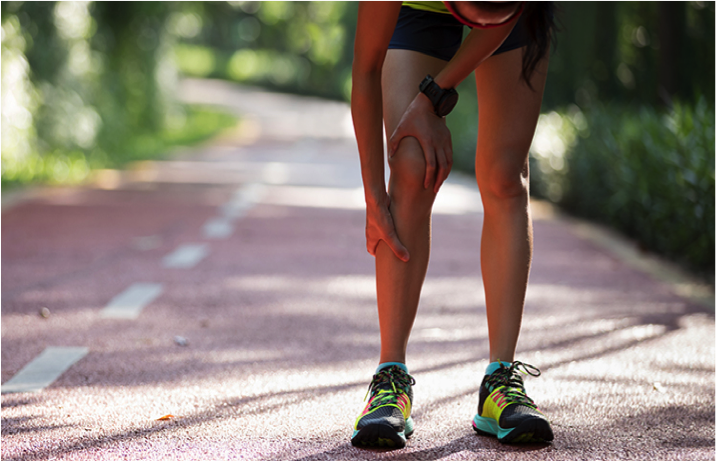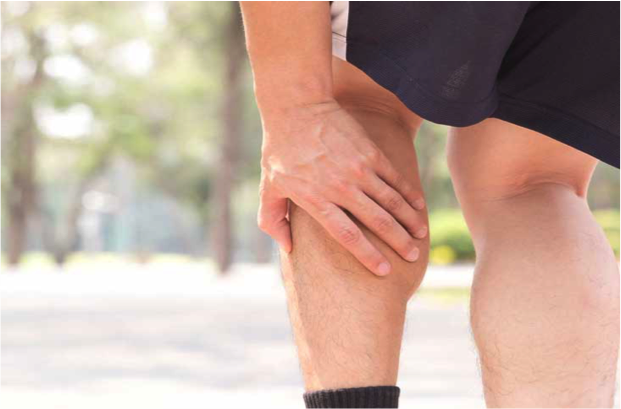CALF PAIN
Often you must have felt pain in the lower part of the leg ie calf. Usually this pain arises due to muscle spasm or strain, but there are many other reasons behind this pain, due to which the pain starts. Some people also feel stiffness along with the pain.
When doctors do not understand the symptoms, they recommend a blood test or ultrasound scan to know the reason behind it. On the other hand, if the pain is minor, then this pain is also cured through therapy or ice compress etc. Today we will tell you about these points through this article. We will tell you what are the Causes of Calf Pain? Plus we’ll learn the symptoms and prevention. Read on…
Due to pain in the calf, people often have trouble running, jumping or joking. At the same time, people also feel heaviness in the calf due to this pain. There can be different reasons behind this pain, sometimes due to change in diet, there is a cramp in the calf, and sometimes due to an injury, the muscles are damaged, due to which swelling is felt.

CAUSES OF CALF PAIN
Pain in the calf can start due to the following reasons
-
Cause of muscle spasm
When there is more pain, that condition is called muscle spasm. This condition lasts for a short time but in this condition one should not panic as it is a common problem. Often the problem arises due to excessive exercise, running, running etc.
-
Due to blue falling i.e. contusion
When there is an injury or the skin is crushed in the calf, it may lead to pain. Due to this, the cells get damaged, so the color of the skin starts turning blue. This bruise also gets better on its own and the pain also goes away in a few days.
-
Diabetic peripheral neuropathy
Conditions like diabetic peripheral neuropathy arise when nerves are affected. When they are damaged, pain arises in the hands, feet, legs, etc. The pain of the shin is also included in this.
This is a condition in which the nerves of the hands, feet, soles are damaged.This condition can lead to common complications of diabetes that include high blood sugar, inflammation of the nerves or genetic factors.
-
Sciatica
When the nerve controlling the muscles is affected, sciatica disease arises. This vein is found in the lower part of the leg, behind the knee. This pain also affects the muscles, due to which part of the shin becomes numb and many people have to undergo surgery for treatment.
-
Deep Vein Thrombosis
When a blood clot collects in a deep vein, this vein can be of leg, shin or arm, then this condition is called Deep Vein Thrombosis (DVT).
The reasons for this include – sitting for a long time, complications of drugs, smoking etc.
Its symptoms include swelling, leg cramps, change in skin colour, appearance of veins in the affected area, feeling of heat in the calf.
-
Due to muscle strain
Usually pain is also felt in the muscles due to fatigue or overuse of them. Apart from this, pain can also be caused by swimming, cycling or lifting weights.
-
Achilles tendinitis
Achilles tendinitis occurs due to overuse, tension or cramps.
Common symptoms include inflammation of the tendons, pain in the back of the foot, swelling, and limited range of motion.
-
Trauma or injury
This can happen due to some trauma, fall, cut or punch, etc.
In this, the color of the skin changes due to injury under the skin.
In case of repeated cuts or bruises without injury, consultation with the doctor should be taken.
-
Muscle tension
The reasons for this are due to fatigue, overuse or not being able to use the muscles properly.
For example, muscle tension can occur due to new exercise patterns or running, cycling, swimming, powerlifting etc.
Muscle tension causes you to have sudden onset of pain, bloating and limited movement.
Ice, heat, and anti-inflammatory medications can be taken for mild to moderate cramps.
Medical treatment is necessary in cases of severe muscle strain or tear.
-
Compartment syndrome
When a large amount of pressure builds up inside the muscles, that condition is called compartment syndrome.
It is usually experienced due to injury, fracture or break of bone in the area.
Symptoms of compartment syndrome may include numbness, severe pain that does not subside even after rest or medication, difficulty in moving the affected area, and a twitch of the affected muscle.
-
Peripheral vascular disease
In even more cases of leg cramps, it can cause limited blood flow to that part of the body and other serious medical problems.

SYMPTOMS OF CALF PAIN
The following are the symptoms of calf pain-
- blue of skin
- feeling stiff
- swelling around
- Feeling of weakness or pain in the calf.
Other symptoms include severe pain, muscle spasms, numbness, loss of balance and coordination, muscle weakness, etc.
Apart from this, your ability to feel changes in temperature or to detect pain gets affected.
PREVENTION OF CALF PAIN
Calf pain can be prevented in the following ways-
The treatment of calf pain depends on its cause. But most causes can be treated at home. Whereas if there is pain in the calf due to overuse or mild to moderate trauma, the following measures can be taken –
-
The right choice of shoes and slippers
Let us tell you that whenever you choose shoes and slippers, buy such shoes and slippers that fit perfectly in your feet. Buying shoes that are too small or too big can put a strain on the shin and trigger pain. This pain does not go away until the effect on the calf stops.
-
Keeping the body moving
By getting up every morning and doing regular exercise and stretching exercises, there is mobility in every muscle of the body including the calf. So add this habit to your daily routine.
Prevent the lack of water in the body
If the amount of water in the body is less, then it is natural to have pain in the calf, so drink enough water and remove muscle spasms.
-
Through stretching exercises
If the muscles are stretched, calf pain can be relieved. In such a situation, exercising not only strengthens the calf muscles but also eliminates pain.
Stretching – Light stretching can help you to reduce the pain of the calf. For this, direct calf stretch etc. can be done.
- calf pain relief
- increase exercise gradually
- Increasing or overdoing the exercise can lead to injury.
Therefore, the injury can be avoided by increasing the level of activity gradually.
-
Healing
The feet should be kept slightly elevated and the ice should be applied. Apart from this, rest is very important. Ice should be applied at intervals of 20 minutes.
OTC medicines
OTC pain relievers can also be taken to reduce the pain in the shin.
Pain in the calf is a common problem. But if this pain increases, then contact the doctor immediately.
Its simple home remedies include rest, ice compresses and keeping the feet slightly elevated.deep vein thrombosis
WHEN TO CONSULT A DOCTOR FOR CALF PAIN ?
There are two muscles in the calf – the gastrocnemius and the soleus.
It connects directly to the Achilles tendon from the heel.This muscle is needed for the movement of any leg.
The pain can vary from person to person but it is usually mild, cramping or severe pain, in some cases there may be stiffness in the lower part of the foot.
A more serious condition can occur if the following symptoms are seen, such as swelling, yellowing of the skin of the calf.
Tingling, swelling of the leg and calf veins, weak legs, fluid retention, redness etc. may occur.
If you see such symptoms along with pain in the calf, you should consult a doctor.
If you or anyone you know is suffering from calf pain, call us today at (469) 545-9983 to book an appointment with our expert doctors.
